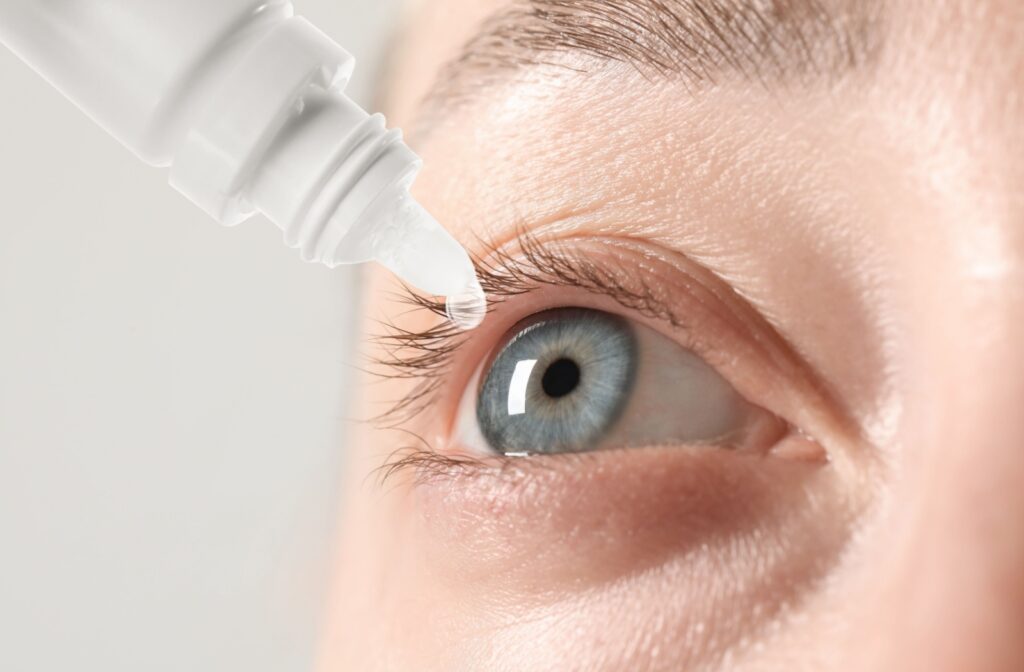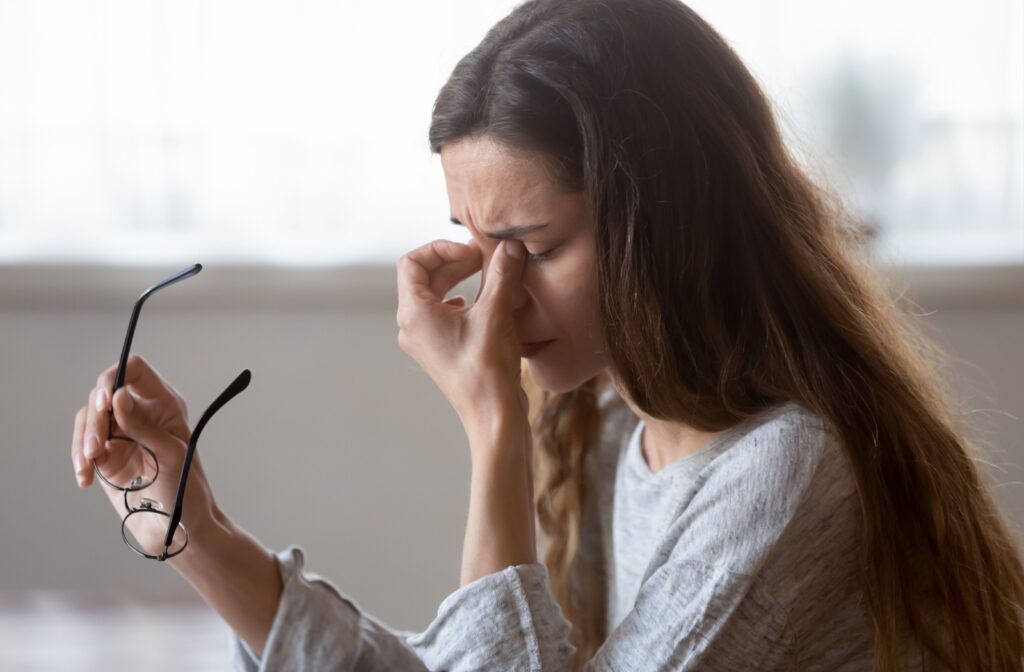We all know how important a good night’s sleep is for our overall well-being. But did you know that consistently skimping on sleep can also affect your eye health? Dry eyes, in particular, can be directly linked to sleep deprivation, and it’s more common than you might think.
If you’ve ever woken up with gritty, irritated eyes after a night of poor sleep, you’re not imagining things. Sleep plays a critical role in maintaining a healthy tear film, which protects and nourishes the surface of your eyes. When sleep suffers, so can your eyes.
What Is Dry Eye?
Dry eye occurs when your eyes don’t produce enough tears, or when the tears you do produce evaporate too quickly. Tears are more than just water—they’re made up of oil, water, and mucus layers that work together to keep your eyes comfortable, clear, and protected.
When this balance is disrupted, you may experience symptoms such as:
- Burning or stinging sensation
- Redness
- Blurry vision
- Sensitivity to light
- A gritty or sandy feeling in the eyes
- Excessive tearing (yes, watery eyes can be a sign of dryness!)
How Sleep Affects Tear Production
Sleep is when your body resets, recharges, and repairs, including your eyes. During sleep, your eyes are closed and protected, allowing the tear film to replenish. Adequate rest helps support the glands that produce tears, particularly the meibomian glands, which produce the oil layer of your tears. This oil layer prevents premature evaporation of your tears and helps keep the surface of your eyes hydrated.
When you don’t get enough sleep, these glands can become less efficient. Your eyes may not produce enough oil, leading to unstable tears that dry out more quickly. On top of that, sleep deprivation can cause general inflammation in the body, including the eyes, exacerbating dryness and irritation.
The Link Between Lifestyle & Dry Eyes
It’s not just sleep deprivation that puts you at risk—modern habits that often go hand-in-hand with poor sleep can also contribute to dry eye symptoms. Consider the following:
- Screen time before bed: Exposure to blue light from phones and computers can delay melatonin production, making it harder to fall asleep. Screen time also reduces your blink rate, which can dry out your eyes.
- Inconsistent sleep schedules: Irregular sleep patterns can throw off your circadian rhythm, affecting everything from your mood to your tear quality.
- Dehydration: If you’re not drinking enough water during the day, your eyes may not have enough moisture to function properly, especially when sleep is lacking.
- Alcohol or caffeine intake: Both can interfere with sleep quality and contribute to eye dehydration.
In short, poor sleep and dry eyes often go hand-in-hand, especially when combined with digital eye strain and other lifestyle stressors.
Is it Chronic Dry Eye or Temporary Discomfort?
It’s important to distinguish between temporary dry eye symptoms (like waking up with dryness after a single rough night of sleep) and chronic dry eye disease. If you’re regularly experiencing dry, irritated eyes—especially first thing in the morning—it may be more than just a sleep issue.
Chronic dry eye is a medical condition that can worsen over time if left untreated. Identifying the root cause—whether it’s related to sleep, environment, screen time, aging, or an underlying health issue—is key to effective treatment.

How Is Dry Eye Treated?
The good news is that dry eyes can often be managed effectively once the cause is identified. Treatment options may include:
- Prescription eye drops: These help increase tear production or reduce inflammation on the eye’s surface.
- Warm compresses: Applying heat to the eyelids can unclog meibomian glands and improve the quality of your tear film.
- Eyelid cleaners: Keeping your eyelids clean can help reduce bacteria and inflammation that contribute to dry eyes.
- Punctal plugs: In more severe cases, your optometrist may recommend punctal plugs, which block the tear ducts to keep moisture on the eye longer.
Dry eye therapy isn’t one-size-fits-all. Your optometrist will tailor treatment to your specific symptoms and lifestyle, and may also recommend lifestyle changes to help reduce flare-ups, like improving your sleep hygiene.
Tips to Sleep Better & Protect Your Eyes
If you suspect that your dry eyes are related to poor sleep, improving your sleep routine could help reduce symptoms. Here are a few simple tips:
- Stick to a consistent bedtime and wake-up time—even on weekends.
- Limit screen time before bed and consider using blue light filters in the evening.
- Avoid caffeine and alcohol late in the day.
- Stay hydrated and consider using a humidifier in your bedroom.
- Practice relaxation techniques like deep breathing or gentle stretching before bed.
Even small changes to your nighttime routine can lead to more restful sleep and happier, healthier eyes.
When to See an Optometrist
If dry, irritated eyes are becoming a regular part of your day, or if your symptoms are interfering with your ability to work, drive, or sleep, it’s time to speak with an eye care professional. Many people chalk up dry eye symptoms to aging or allergies and never seek treatment, but relief is available.
At Total Vision Talega, we offer personalized dry eye evaluations and treatment plans tailored to your needs. Whether your dry eyes are caused by sleep deprivation, screen time, or something else entirely, we can help you find the right solution.
Don’t wait for dry eye symptoms to disrupt your daily life. Schedule an eye exam today and take the first step toward lasting relief.



